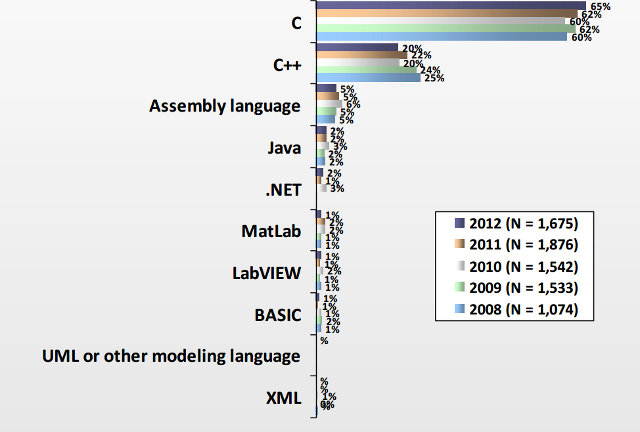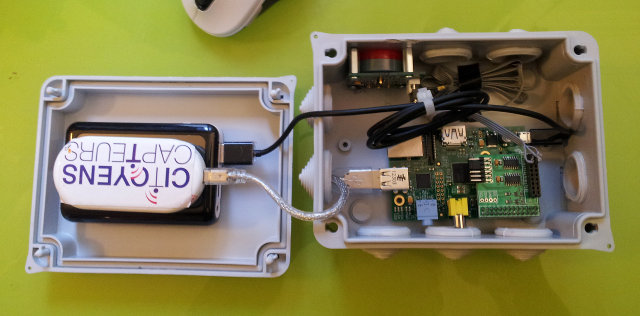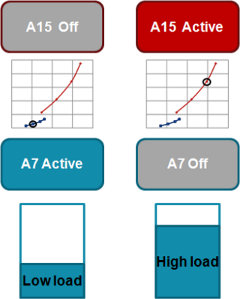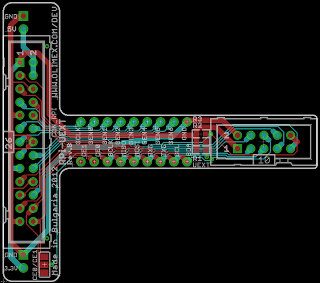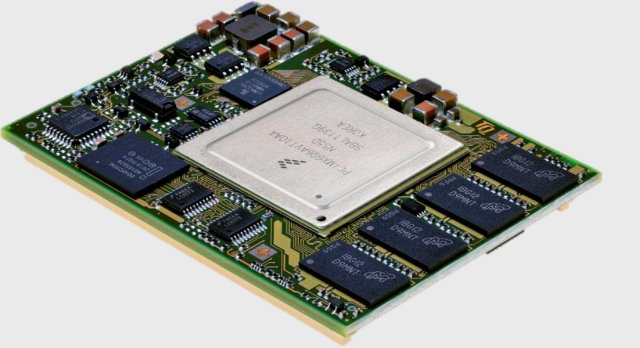Andy Green, TI Landing Team lead at Linaro, gave an interesting presentation entitled “How to measure SoC power” at Linaro Connect Europe 2012. This talk was specifically aimed at software engineers, so that they know how to properly measure power consumption, and take actions to optimize the software to decrease it. In the first part of the presentation, he gives an overview of electronics basics with definition of voltage, load, current and power, units used for power measurements (Clue: you need to use Watts), and how voltage, current and power can be measured with voltmeters and ammeters. When you want to measure power in a rail, you would usually insert a shun resistor, use a multimeter and derive the power from the resistance and the measured voltage (P=V2/R). He also gives details about regulator efficiency, choosing measurement sampling… There are 4 common measurements strategies: DC IN – Easiest way, gives the complete […]
2012 Embedded Market Study – Software Development & Processors
I’ve just come across an Embedded System Study by UBM published in April 2012. The company surveyed over 1,700 professionals working on embedded systems who are mainly based in the US (56%), but also in Europe (21%) and Asia (12%). The report is 87 long, but I found some of the slides are particularly interesting in regards to programming languages, operating systems and software life cycle, as well as processor/micro-controller choices. Unsurprisingly C (65%), C++ (20%) and assembler (5%) are still the main languages used for embedded software development. In this report, we also learn that the average team is composed of 14.5 members including 5.6 software engineers, 5.6 hardware engineers and 3.3 firmware engineers. 2012 was the first year they included QA Engineers and system integrators both with 2.6 members on average working on projects lasting from less than 6 months to over 25 months. UBM survey also provides a […]
Le Labo Citoyen Gasser – Raspberry Pi Based High Precision Pollution Monitoring System
“Le Labo Citoyen” is a recently founded French non-profit organization aimed at “promoting and experimenting with innovating and free technologies for the citizens and the environment”. Their first project is to gather pollution data (NO2, O3, and SO2 levels) in Paris using 2 (soon to be) open source components: Gasser – Self-contained mobile sensor currently powered by the Raspberry Pi ThingStream – Open source IoT datastore which should be similar to iDigi Cloud, except you can just store data in your own server or on “Le Labo Citoyen” servers. Gasser has four main parts: Sensor(s) – Alphasense B4-series sensors (black and red component in the top left of the main box) with accuracy of up to <10 ppb (parts-per-billion). Cost: ~110 Euros. They currently only use the NO2 (nitrogen dioxide) sensor. ADC & Computer – Raspberry Pi (Cost: ~30 Euros) & Delta-Sigma ADC (Cost: ~30 Euros). Communication Medium – Huawei […]
Big.LITTLE Processing Implementations and Current Status
There was a big,LITTLE mini-summit during Linaro Connect Europe 2012, where an update was given on current big.LITTLE implementations and the results of measurement of power vs performance. Big.LITTLE Processing Implementations Overview As briefly mentioned in “Versatile Express TC2 (2xA15, 3xA7) Development Board at ARM Techcon 2012“, there are 2 big.LITTLE implementations: In-kernel switcher (IKS) This implementation is already available through Linaro and only required minimal changed to the kernel as it mainly an augmentation to DVFS (Dynamic Voltage and Frequency Scaling) except instead of only adjusting voltage and frequency depending on the load, it will also move the load to different cores. The main drawback is that this implementation only uses half the cores. For example, on a 2x Cortex A15 / 2x Cortex A7 system, it can only use 2 cores at the same time (either A15 or A7 cores), as the load is managed between one type […]
AMLogic Releases U-Boot and Updated Linux Kernel Source Code
AMLogic released kernel 3.0.8 source code for AML8726-MX a few months ago, and yesterday they provided an updated tarballs with the kernel, and for the first time, AFAIK, released the source code for U-Boot. There are 4 new files apparently generated from the (internal) git repository in AMLogic: common-2012-11-20-git-b687495906.tar.gz (108M) – This is the same kernel 3.0.8 release has last time, but with updated code. m1-kernel-android-2012-11-20-git-5d0f6b8e93.tar.gz (103M) – This looks like an older kernel 2.6 for AML8726-M1 only. uboot-master-2012-11-20-git-9b50e9a295.tar.gz (16M) – U-Boot 2010.06 possibly to use with the older 2.6 kernel. Only for M1 & M3 platforms. uboot-next-2012-11-20-git-b0e532795a.tar.gz (40M) – U-Boot 2011.03 for use with M3 and M6 platforms. I’ve already explained how to build the kernel in the previous post, so I’ll focus on U-Boot this time. Ubuntu 12.04 arm-linux-gnueabi- toolchain fails to build U-Boot (uboot-next), so you’ll have to install Sourcery toolchain instead: wget http://openlinux.amlogic.com/download/linux/ARM/gnutools/arm-2010q1-188-arm-none-eabi-i686-pc-linux-gnu.tar.bz2 tar xjvf arm-2010q1-188-arm-none-eabi-i686-pc-linux-gnu.tar.bz2 […]
Olimex to Provide $5 Raspberry Pi GPIO to Breadboard & UEXT Adapter
At $25 and $35 is Raspberry Pi is currently the cheapest board you can buy to develop for ARM Linux, however the expansion boards such as the Gertboard ($60) and the recent PiFace Digital ($32) are not as cheap considering the few components they have on board. This is why Olimex has designed a Raspberry Pi GPIO to breadboard & UEXT adapter (RPI-UEXT) which should be available in 2 weeks for 3.95 Euros (~$5). You then just need to add a breadboard for 2.95 Euros (~$3.8 ), which means for just $9 you can start prototyping easily with the Raspberry Pi. The RPI-UEXT adapter (PCB Layout pictures on the right) also features – as the name implies – a UEXT (Universal EXTension) connector which consists of 10 pins which provide power (+3.3V/GND), and access to asynchronous serial I/O, I2C & SPI signals. This connector allows to connect other UEXT modules […]
TQ Group TQMa6X Embedded Modules based on Freescale i.MX6 Processors
TQ Group has recently unveiled several TQMa6X embedded CPU modules that feature Freescale i.MX6 Solo, Dual and Quad processors, targeting screen, multi-touch, and multi-display applications as well as conventional controlling tasks. 3 modules are available: TQMa6S-AA – Single Cortex A9 / 1,2 GHz, 2 GB eMMC Flash, 512 MB DDR3, 64 kB EEPROM, -25°C…+85°C TQMa6D – Dual Cortex A9 / 1,2 GHz, 2 GB eMMC Flash, 512 MB DDR3, 64 kB EEPROM, -25°C…+85°C TQMa6Q – Quad Cortex A9 / 1,2 GHz, 2 GB eMMC Flash, 1 GB DDR3, 64 kB EEPROM, -25°C…+85°C TQMa6X modules share the following specifications: Processor – Freescale MCIMX6 Single/Dual/Quad Cortex A9 up to 1,2 GHz System Memory – Up to 2 GB DDR3 SDRAM Storage – Up to 64 GByte eMMC Flash, EEPROM: 0 / 64 kbit and up to 128 MB NOR-Flash. System interfaces: CAN – 2x FlexCAN ESAI (Enhanced Serial Audio Interface) Ethernet – 1x 10/100/1000 Mbit (IEEE […]
Freescale i.MX6 Resources: Development Boards, Documentation, Source Code and Tools
Reader “Mark” recently left a comment saying the NDA on Freescale i.MX6 resources was lifted and documentation and source code were now available for the platform. So it’s time for me to look into it, and provide an overview of Freescale i.MX6 features, list available development platforms, and have a closer look at the documentation, source code and tools for the platform. Freescale i.MX6 Processors In 2011, Freescale initially announced 3 processors in the i.MX6 series for consumer, industrial and automotive markets, but added 2 lite SoC in 2012, and there are now 5 members in the family: Freescale i.MX6SoloLite – Single Cortex A9 processor up to 1 GHz with 256KB L2 Cache, 32-bit DDR3 and LPDDR2 memory support, and 2D graphics accelerator (Vivante GC355 + GC320) Freescale i.MX6Solo – Single Cortex A9 core up to 1 GHz with 512KB L2 Cache, 32-bit DDR3 and LPDDR2 memory support, and 2D & […]



